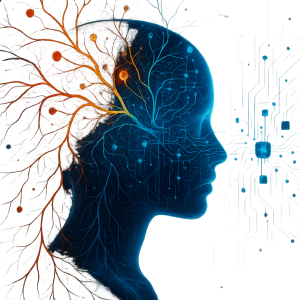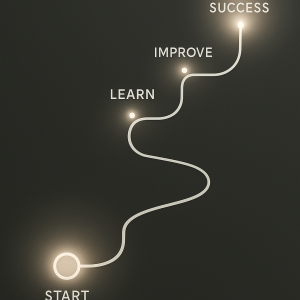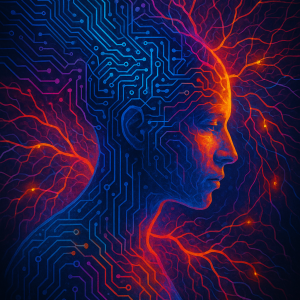In a world gripped by technological change, rising uncertainty, and mental fatigue, the teachings of the Bhagavad Gita shine with renewed clarity. Though spoken over 5,000 years ago on a battlefield in Kurukshetra, the Gita speaks directly to the dilemmas of 2025.
It is not merely a spiritual scripture—it is a psychological guidebook, a life management manual, and a philosophical compass for uncertain times.
In 2025, we are overwhelmed by choices. We navigate hyper-connected lives, career pivots, health crises, climate emergencies, social isolation, and digital overconsumption. Many suffer not from a lack of opportunity—but from a lack of clarity. What should I do? Who am I really? Why am I not fulfilled even when I succeed?
These are the questions Arjuna asks Lord Krishna—not in 2025 Silicon Valley, but on a chariot between two armies. And Krishna’s answers are as modern as they are timeless.
### The Battlefield Within
The Kurukshetra war represents the battlefield of human experience—conflict between duty and desire, action and anxiety, purpose and pressure. In today’s context, this battlefield plays out in:
– Choosing between a job that pays well and one that fulfills
– Navigating ethical decisions in competitive industries
– Managing ambition without losing peace
– Fulfilling family expectations while seeking personal freedom
Krishna’s first message is simple but powerful: do your dharma—your duty, your purpose—without attachment to the result.
This is revolutionary in a world obsessed with likes, metrics, and ROI.
### Beyond Motivation: Anchoring in Dharma
Motivation fades. Discipline tires. But dharma—the deep internal compass of who you are and what you are here to give—guides through chaos.
The Gita tells us: don’t act for reward. Act because it is right. The modern mind, trained by notifications and results, struggles with this. But once aligned with dharma, burnout gives way to flow. Doubt gives way to trust. Decision-making becomes easier.
### Karma Yoga in Corporate Culture
Karma Yoga—the path of selfless action—is more relevant than ever. In 2025:
– The best leaders serve their teams without ego
– The best creators share without obsessing over likes
– The happiest workers detach from outcomes and focus on value
This isn’t passivity. It’s freedom from anxiety.
When Krishna tells Arjuna to act but not cling to outcome, He is training the mind for peace in the middle of performance.
And that is exactly what the modern world needs.
As we stand on the edge of profound shifts—technological singularity, artificial intelligence integration, global climate shifts, mental health epidemics, economic decentralization, and a total rewiring of how we live and work—the ancient wisdom of the Bhagavad Gita is not just a spiritual anchor but a survival manual.
Across the next two decades, human beings will have more power, more access, and more freedom—but also more noise, more decisions, and more existential crises. It is precisely this context that makes the Gita more relevant than ever. Its teachings on dharma (purpose), karma (action without attachment), yoga (balance), and jnana (inner knowing) offer clarity where society offers chaos.
The Gita prepares us not for a simple life—but for a meaningful one. In a world of shifting identities, artificial status signals, algorithmic attention, and cultural division, the Gita centers the eternal truth: peace is not found in performance, but in presence.
Its verses will guide the innovators, the entrepreneurs, the healers, and even the skeptics. Because regardless of religious affiliation, the Gita teaches the art of living fully while staying inwardly free. And over the next twenty years, as machines do more of our tasks, humans will need to rediscover meaning. The Gita will be that bridge.
(Reflection 1) As we stand on the edge of profound shifts—technological singularity, artificial intelligence integration, global climate shifts, mental health epidemics, economic decentralization, and a total rewiring of how we live and work—the ancient wisdom of the Bhagavad Gita is not just a spiritual anchor but a survival manual.
Across the next two decades, human beings will have more power, more access, and more freedom—but also more noise, more decisions, and more existential crises. It is precisely this context that makes the Gita more relevant than ever. Its teachings on dharma (purpose), karma (action without attachment), yoga (balance), and jnana (inner knowing) offer clarity where society offers chaos.
The Gita prepares us not for a simple life—but for a meaningful one. In a world of shifting identities, artificial status signals, algorithmic attention, and cultural division, the Gita centers the eternal truth: peace is not found in performance, but in presence.
Its verses will guide the innovators, the entrepreneurs, the healers, and even the skeptics. Because regardless of religious affiliation, the Gita teaches the art of living fully while staying inwardly free. And over the next twenty years, as machines do more of our tasks, humans will need to rediscover meaning. The Gita will be that bridge.
In the second and third chapters of the Bhagavad Gita, Lord Krishna introduces the foundational concept of Karma Yoga—the yoga of action. It is not merely about doing your job. It is about aligning action with dharma (inner purpose), releasing obsession over the result, and finding spiritual clarity in worldly responsibilities.
In a post-2025 world filled with career pivots, side hustles, AI-led transformation, and attention-driven ambition, Karma Yoga offers ancient clarity. It teaches us how to act—boldly, brilliantly, and ethically—without being emotionally enslaved to outcomes.
### Why Karma Yoga Matters Now
In the workplace, people are judged by results: Did you hit your goals? Did the post go viral? Did the startup scale?
But Karma Yoga whispers a deeper wisdom: You are responsible for your action, not the outcome. Do the work because it is your truth. Leave the result to time, grace, and the universe.
### The Modern Worker’s Dilemma
In 2025 and beyond, people are exhausted not from action—but from attachment:
– They want to be rewarded instantly
– They obsess over numbers and approval
– They hesitate to start unless they can guarantee success
Karma Yoga breaks this mental trap. It frees you from paralysis and perfectionism. It invites you to act from love, not fear.
### Krishna’s Advice to Arjuna
Krishna tells Arjuna on the battlefield:
“Do your prescribed duty, for action is better than inaction. A man cannot even maintain his physical body without work.” (BG 3.8)
He then reminds:
“You have a right to perform your duty, but not to the fruits of action.” (BG 2.47)
These lines echo in boardrooms, artist studios, kitchens, hospitals, and classrooms. Wherever action exists, Karma Yoga applies.
### Practicing Karma Yoga Today
1. **Define your dharma** – What work aligns with your nature?
2. **Detach from the result** – Set goals, but don’t collapse if they change.
3. **Focus on service** – Who benefits from your action?
4. **Trust the process** – The reward may not be visible today.
5. **Be fully present** – Karma Yoga is mindfulness in motion.
### How Karma Yoga Calms the Mind
When you stop obsessing over success:
– Anxiety lessens
– Clarity sharpens
– You perform better
Why? Because fear fades. Judgment softens. You begin to flow. You enter the zone—where excellence meets surrender.
This is where true creativity, leadership, and mastery emerge.
### Karma Yoga Is Not Passivity
Let’s be clear—detachment is not laziness. Karma Yoga does not say “don’t care.” It says “care deeply—but be unattached.”
You still strive. You still show up. You still give your best. But you do not allow results to define your worth.
This is the secret weapon of the modern yogi: fierce action, zero ego.
### In AI and Automation, Action Still Matters
As machines take over tasks, human value shifts to:
– Creativity
– Ethics
– Strategy
– Compassion
Karma Yoga turns work into worship. It transforms career into calling.
Even in a world of bots and algorithms, your intention sets you apart. Your sincerity becomes your signature.
### Final Reflections
Karma Yoga liberates. Not from duty—but from bondage. It invites you to be a doer without being a prisoner of doing.
In this Kanda of the Gita, we rediscover the joy of meaningful effort—work as offering, leadership as service, ambition as dharma.
In 2045, as much as in ancient India, this truth stands tall: Right action, detached from outcome, is the highest freedom.
Jnana Yoga—the yoga of knowledge—is one of the most profound paths in the Bhagavad Gita. Rooted in inquiry, discernment, and direct realization, Jnana Yoga is the pursuit of truth through wisdom. In the age of misinformation, content overload, and endless distractions, this path shines as a guide for those seeking inner clarity amidst outer noise.
In 2025 and beyond, we face a strange paradox: we know more, but understand less. We have access to every fact, stat, and opinion—but still feel uncertain. The problem isn’t lack of data. It’s lack of discernment. And this is where Jnana Yoga begins.
### What Is Jnana Yoga?
Jnana means knowledge—not intellectual trivia, but deep spiritual knowing. It is wisdom that cuts through illusion, ego, and identity. In the Gita, Krishna tells Arjuna:
“Just as a blazing fire turns firewood to ashes, so does the fire of knowledge burn all karma to ashes.” (BG 4.37)
Jnana Yoga is about:
– Asking the right questions
– Peeling away false labels (“I am my job,” “I am my fear”)
– Realizing your true Self (Atman) beneath the surface
– Seeing unity in apparent separation
### Why Jnana Yoga Matters in the Modern World
Today’s society values intelligence but ignores insight. It rewards performance but neglects presence.
We chase resumes and titles, mistaking them for identity. We live in avatars, profiles, and projections—yet feel disconnected from ourselves.
Jnana Yoga invites you back home.
It asks: Who are you beyond your name, your role, your possessions?
### Discernment Over Distraction
In a world flooded with information, your superpower is viveka—discernment.
Jnana Yogis develop:
– Mental stillness
– Deep reflection
– Awareness of thoughts without attachment
– Ability to question beliefs, even sacred ones
You move from automatic reaction to intentional response.
### From Ego to Essence
Modern life inflates ego:
– “What do people think of me?”
– “How do I appear online?”
– “Am I successful enough?”
Jnana Yoga cuts through this illusion. It reminds you:
You are not your thoughts.
You are not your possessions.
You are not your anxiety.
You are consciousness, awareness itself.
This realization is not abstract—it is liberating.
### The Jnana Yoga Practice
1. **Study of Scriptures (Shravana)**
Regular reading of the Gita, Upanishads, and spiritual texts—not for memorization, but reflection.
2. **Contemplation (Manana)**
Ask: “What is real?” “What am I afraid to lose—and why?”
3. **Direct Experience (Nididhyasana)**
Meditation, silence, and observation to realize truth—not just conceptually but experientially.
This process builds unshakable calm.
### Wisdom in Leadership, Relationships, and Life
Jnana Yoga isn’t retreat from life—it’s engagement with clarity.
– Leaders guided by wisdom build ethical, long-lasting teams
– Parents raise children with awareness, not projection
– Creators speak truth without attachment to reaction
Wisdom simplifies. It removes drama. It reveals what matters.
### Final Thoughts: The End of Seeking
The true Jnana Yogi doesn’t seek more. They seek to understand.
Not to be better than others—but to know themselves.
And in knowing themselves, they find peace that no amount of achievement can replace.
In the Gita, knowledge is not academic. It’s soul-level clarity. It’s the light that ends confusion. And in the age ahead, that light will be needed more than ever.
Bhakti Yoga, the yoga of devotion, is the path of the heart. It is the practice of surrender—not as weakness, but as strength rooted in love. In the Bhagavad Gita, Krishna tells Arjuna that among all yogis, the one who offers with love and faith is dearest to Him.
In the 21st century, we often associate devotion with religion, dogma, or outdated rituals. But Bhakti is not confined to temples or texts. It is a state of being—an unconditional trust in the divine flow of life. And in a hyper-rational, hyper-distracted, and hyper-performative world, this path offers refuge.
### What Is Bhakti Yoga?
Bhakti means love, devotion, and heartfelt connection. It is:
– Offering your actions, thoughts, and life to the Divine
– Trusting the process even when the result is unclear
– Releasing control and embracing grace
– Seeing the sacred in the ordinary
Bhakti Yogis don’t just worship—they relate. Their practice is personal, intimate, alive.
### Bhakti Beyond Religion
You don’t need to wear robes or chant Sanskrit to live Bhakti. In fact, Bhakti can be found in:
– A mother nursing her child with full presence
– An artist painting with reverence
– A scientist awed by the mystery of creation
– A worker offering daily labor with devotion to excellence
Where there is love without ego, there is Bhakti.
### Krishna’s Promise to the Devoted
In the Gita, Krishna says:
“Even if the most sinful person worships Me with exclusive devotion, he is to be considered righteous, for he has made the right resolve.” (BG 9.30)
This is radical compassion. It’s not your past, your perfection, or your performance that matters—it’s your heart.
This message is healing in a world driven by comparison and cancel culture. Bhakti says: begin where you are. Bring your flaws. Bring your yearning. You are worthy.
### Bhakti in Daily Life
– Begin the day with gratitude
– Dedicate your work to something higher
– Speak to the divine like a friend, parent, or beloved
– Keep sacred reminders visible (a mantra, image, or altar)
– Surrender the fruits of your actions
You don’t need to control everything. You need to connect to something bigger than yourself.
### Devotion Is Power, Not Passivity
Many misunderstand Bhakti as passive. But surrender is not escape. It’s the highest intelligence. When you surrender, you stop resisting what is. You act, but let go of fear. You lead, but bow to life’s wisdom.
Some of the world’s greatest revolutionaries, healers, and creators were Bhaktas at heart. Their power came not from force—but from faith.
### Bhakti and Emotional Resilience
In times of grief, fear, or confusion, Bhakti heals. It allows you to cry, rage, doubt—and still be held.
When mental strategies fail, the heart takes over. And Bhakti holds space for the heart’s full range.
This is especially needed today, when loneliness, depression, and anxiety are rising. Bhakti Yoga offers a spiritual antidote—connection, meaning, love without condition.
### Modern Bhakti Practices
– Kirtan (devotional music and chanting)
– Seva (selfless service)
– Japa (repetition of sacred names)
– Bhakti journaling (writing letters to the Divine)
– Loving awareness meditations
These are practices of softening. Of remembering. Of resting in presence.
### Final Thoughts: From Achievement to Adoration
In a culture that rewards output, Bhakti invites us to return to the inner temple.
It teaches:
– That love is not a weakness, but our original strength
– That surrender is not quitting, but trusting
– That devotion is not outdated—it’s timeless
Bhakti doesn’t ask for perfection. Only your presence. Only your heart.
And in this age of overthinking, overworking, and overwhelming noise, that may be the most sacred offering of all.
























